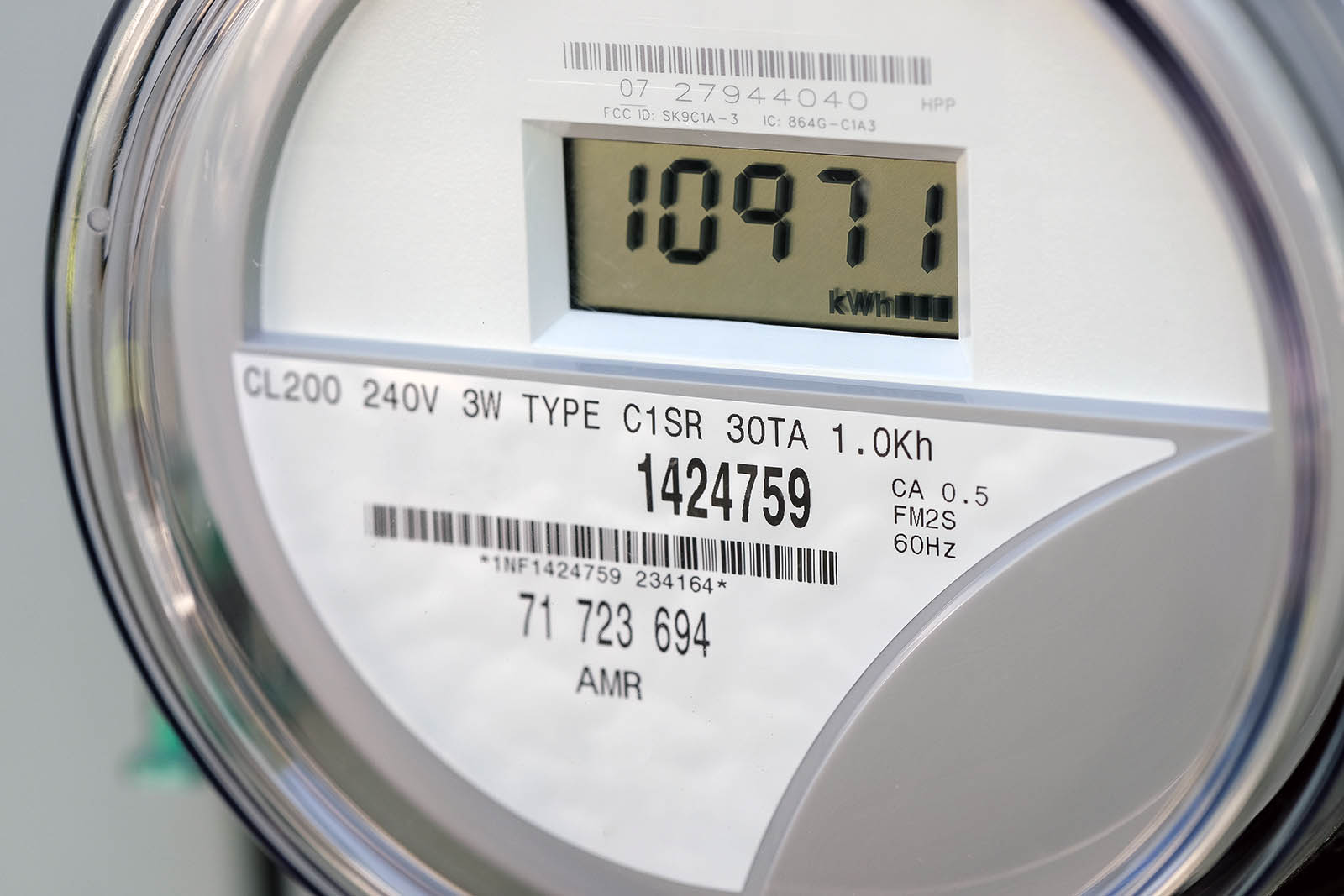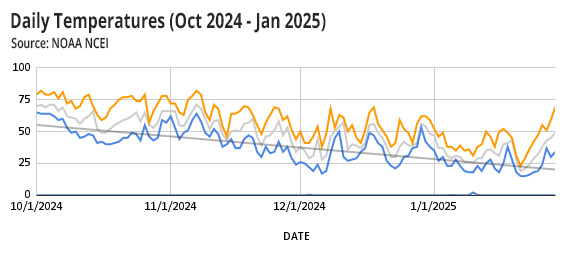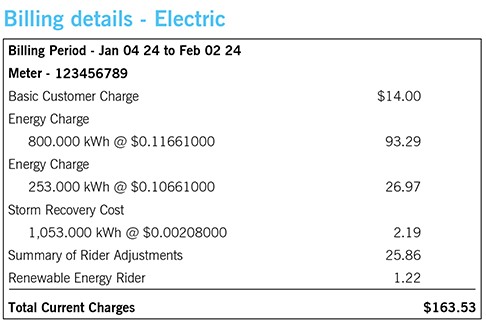Welcome!

(David Gales / Adobe Stock)
Colder weather, higher usage lead power bill sticker shock
ASHEBORO — After grappling with high energy bills last month, residents braced for another round of steep costs as Christmas lights and frigid temperatures drove power usage up. When bills posted, many turned to social media to voice their confusion and frustration.
Local residents reported seeing their already high bills double or triple, with most of those hit hardest being seniors and families on fixed incomes.
“Seniors over 65 don’t stand a chance. Duke Energy is the only power company we have, so you either pay it or they cut it off,” said Jimmy Sullivan, a local resident. “We have a small three-bedroom house, and it’s absolutely insane what they’re charging.”
Some residents on fixed incomes said rising costs have forced them into difficult choices, like cutting back on food or medicine to afford their power bills.
Several customers said they contacted Duke Energy to check their meters, only to be told there was nothing wrong. Others reported higher bills despite efforts to reduce consumption, such as using fireplaces and unplugging appliances.
Some pointed to Duke Energy's strong financial position as they expressed frustration. “Tired of the monopoly,” one resident commented online. “The CEO makes $15-$20 million, and the stock’s been near or over $100 for the last year.”
Cold temperatures drove higher usage
Based on input from more than one hundred residents who shared their energy usage and costs, colder-than-usual weather was a major factor behind the recent spike.
October and November were warmer than average, but temperatures began to dip in December, averaging 42°F — 0.3 degrees below normal. The real chill came in January, with an average temperature of 34°F, 5.7 degrees below normal, according to the National Weather Service in Raleigh.

“It's currently the 16th coldest January on record,” said meteorologist Tom Green in an email at the end of January. Official numbers for the month were not yet available, but Green says it’s been a while since it’s been this cold. “The last time we had a month with an average temperature below 34 degrees was 2014 (33.5)”
With homes working harder to stay warm, energy usage surged. Local data shows average consumption jumped from 1,154 kWh in November to 3,111 kWh in January.

Efficiency Challenges in North Carolina Homes
Many homes in North Carolina aren't built for prolonged cold weather. State building codes require heating systems to maintain 68°F when it's 20°F outside. However, older homes often lack proper insulation, leaving heating systems struggling — and energy bills soaring.
John Sawyer, owner of Climate Control Inc., a contractor for the Weatherization Assistance Program, said outdated HVAC systems and poor insulation are common culprits.
“Many people rely on inefficient space heaters, which only add to costs,” he said. "Water heaters are another major factor, accounting for 18% to 25% of energy bills. Lowering the temperature to 120 degrees can help reduce usage."
Sawyer recommended steps such as upgrading HVAC systems, improving insulation, and sealing crawl spaces and attics.
“Making these improvements can save between $7,000 and $12,000 annually on energy costs,” Sawyer said.
Residents interested in the Weatherization Assistance Program can find more information, including application details, on the Piedmont Triad Regional Council's website.
What role did higher energy costs play?
According to the data provided by residents, the average bill increased from $183.68 to $427.78, a staggering 57% jump, despite a 5% rate decrease during the same period. Duke Energy Progress (DEP) confirmed that their rates dropped by 4.5% in December.
Overall, however, the cost of energy is up. U.S. Energy Information Administration data shows that the average retail price of residential electricity per kWh increased by 11% over the past year, 19% between 2017 and 2023, and more than 59% between 2001 and 2023. (Data for 2024 was not available at the time of research.)
What role did fees play?
Many customers focused on additional charges, such as the “Summary of Rider Adjustments” and storm recovery fees, suspecting these contributed to the higher bills.

The “Summary of Rider Adjustments” did not have a major impact on higher bills itself. This charge includes costs for things like fuel, energy efficiency programs, renewable energy, and support for low-income households. This charge is applied as a rate adjustment, meaning higher usage results in a higher total charge. In the past, the rider charge was included within the Energy Use charge and not listed separately. To make bills clearer, Duke Energy says they now break down these charges so customers can see how their bill is calculated. (You can learn more about how to read and understand your Duke bill here on the Duke Power website.)
The other charge mentioned by residents was the storm recovery fee. This small, fixed charge is spread across all customers over several years. While it slightly increases bills, it has not been a major factor in recent increases.
Duke Energy currently holds approximately $1.1 billion in bonds to cover storm costs from hurricanes and ice storms over the past decade. The company plans to seek regulatory approval to issue additional bonds to recover hundreds of millions of dollars in expenses from Hurricane Helene, which heavily impacted western North Carolina. If approved, customers could see an additional storm recovery charge on their bills beginning in late 2025 or early 2026.
Will February bring any relief from high bills?
It's unclear whether February will bring relief from high energy bills. The National Oceanic and Atmospheric Administration (NOAA) predicts a 50-60% chance of above-average temperatures this month. However, forecast models suggest another chance of winter weather in the latter half of next week.
--
Tips from Duke Energy for saving on your power bill
- Reduce your thermostat to the lowest comfortable setting — the lower the temperature, the more you can save.
- Change your air filter and schedule regular maintenance for your heating systems. Maintaining your heating systems can help increase efficiency.
- Leave drapes or blinds open on the sunny side of the home to allow the sun’s rays to warm the house, but close them at night to help insulate your home.
- Operate ceiling fans in a clockwise direction in the winter to push warm air back down into the room.
- Seal cracks in windows, doors and vents with caulking and weatherstripping to save 10% to 20% in heating costs.
- Replace standard bulbs with LEDs. LEDs are more efficient than regular bulbs, while giving off the same amount of light.
- Set your water heater to 120 degrees. Water heating is typically the second-biggest user of energy in your home.
Customers can get more tips, learn about incentives, and sign up for usage alerts and other tools to save money at duke-energy.com/WinterEnergySavings
Energy Assistance programs
Crisis Intervention Program (CIP) — CIP provides emergency assistance for households experiencing a heating or cooling crisis that poses a health or life-threatening risk. Eligible households must meet income requirements, have an energy-related crisis, and provide a utility statement showing the amount owed. Applications are accepted from July 1 through June 30 or until funds are exhausted. Apply through your local DSS by mail, email, fax, or drop-off — no face-to-face interview required.
Low Income Energy Assistance Program (LIEAP) — LIEAP provides a one-time payment to help eligible households with heating bills. Households with a person aged 60 or older or receiving disability services may apply from Dec. 1-31. All other households can apply from Jan. 1-March 31 or until funds are exhausted. Visit your local Department of Social Services or apply online via NCDHHS ePASS for more information.
Share the Light Fund — Duke Energy Progress provides heating and cooling assistance to residential customers in counties it serves. Eligible customers must have a past-due balance, unpaid deposit or reconnection charge. Funds are distributed through partner agencies to help pay energy bills and related charges. For assistance, call the CARELINE at 800.662.7030.
Weatherization Assistance Program (WAP) — WAP helps low-income North Carolinians save energy, reduce utility bills, and stay safe in their homes by improving energy efficiency. The program focuses on the elderly, disabled, families with children, high energy users and the energy burdened. In 2021, over $22.6 million in federal grants allowed more than 1,100 homes to be weatherized and more than 900 heating, ventilation, and air conditioning (HVAC) units to be repaired or replaced throughout the state. For more information, visit the NC Department of Environmental Quality's Weatherization Assistance Program page.
